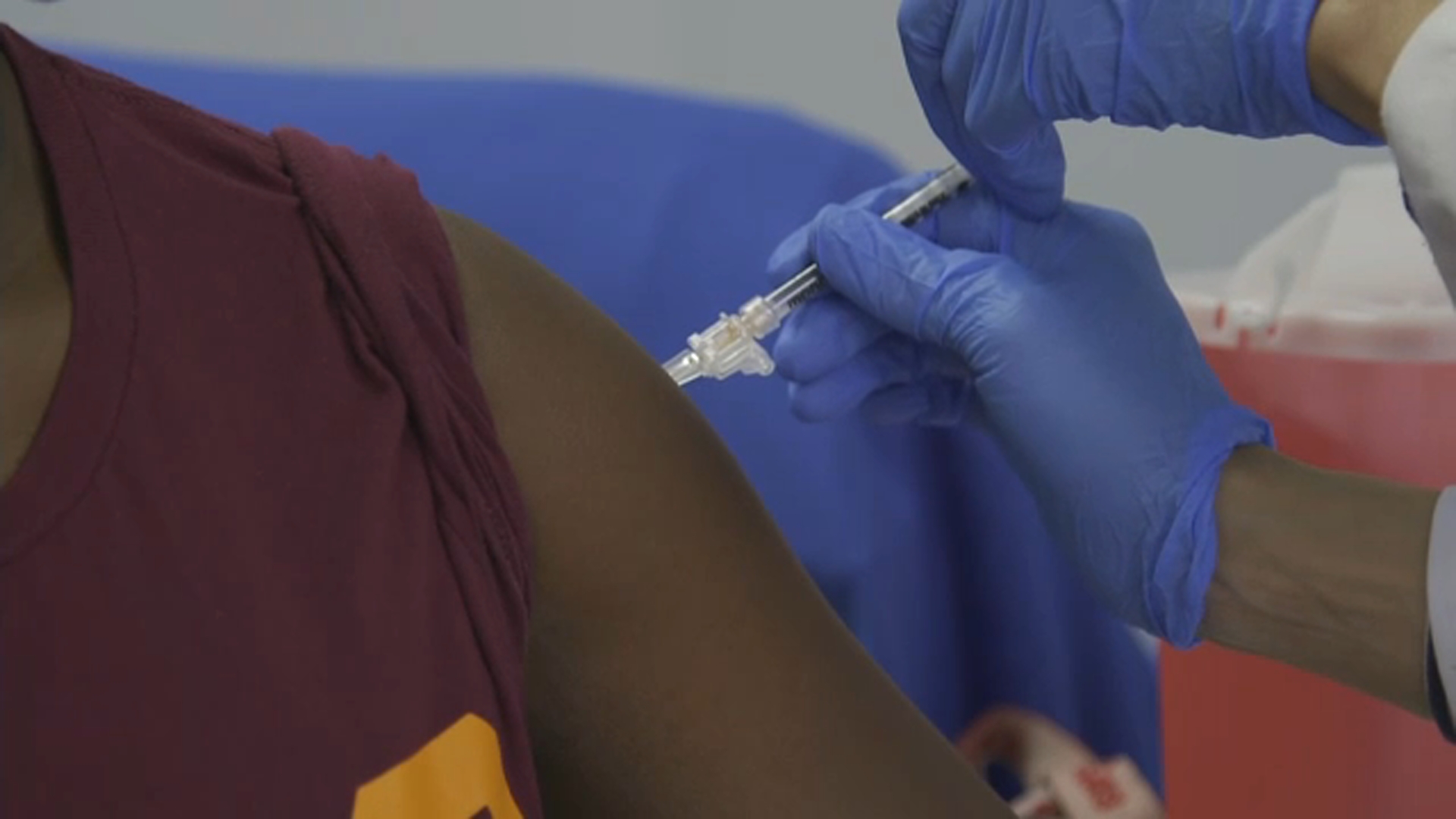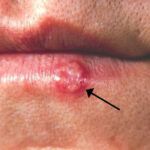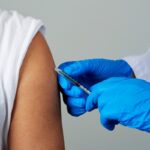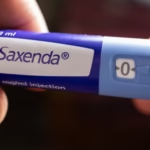The evolving landscape of COVID-19 has introduced a new variant that has quickly garnered a distinctive and somewhat alarming nickname: “razor blade throat” COVID.
This moniker has emerged as a result of a recent surge in reported cases in various parts of the world, where individuals are experiencing exceptionally painful sore throats. The variant in question, scientifically identified as NB.1.8.1. and colloquially referred to as “Nimbus,” is believed to be the driving force behind this particular and distressing symptom.
Medical professionals and media outlets in countries such as the United Kingdom, India, and other regions have specifically highlighted this severe sore throat as a prominent characteristic associated with Nimbus infections.
While the public’s immediate reaction to such a vivid description might be one of heightened concern, health experts are quick to reassure that, so far, there isn’t a major cause for alarm regarding the overall severity of this variant compared to others. This article aims to provide a comprehensive overview of the Nimbus variant, detailing its symptoms, spread, and the current expert consensus on its public health implications, helping to separate fact from alarmist rhetoric.
Understanding Nimbus: Symptoms and Distinguishing Features
While the “razor blade throat” is a notable symptom, Nimbus also presents with more common COVID-19 indicators.
The “Razor Blade Throat” Phenomenon
The most striking symptom associated with the NB.1.8.1. or “Nimbus” variant is the intensely painful sore throat, described by some as feeling like “razor blades.” This particular symptom has been widely reported by doctors and patients alike in regions experiencing a rise in Nimbus cases. It suggests a more severe or distinct inflammatory response in the throat compared to what has been typically observed with previous COVID-19 variants.
This heightened discomfort in the throat area is what primarily differentiates Nimbus symptomatically from other circulating strains and has contributed to its memorable, albeit concerning, nickname. While the exact biological mechanism causing this increased severity in throat pain is still under investigation, it points to a specific tropism or immune interaction of the Nimbus variant within the upper respiratory tract.
Common COVID-19 Symptoms Persist
Despite the dramatic “razor blade throat” symptom, it is crucial to remember that Nimbus, like other COVID-19 variants, still presents with the more established and widely recognized symptoms of the disease. These include:
- Fever and chills: A common systemic response to viral infection, indicating the body’s immune system is fighting the virus.
- Cough: Often dry and persistent, it can be a sign of respiratory tract irritation.
- Shortness of breath: A more severe symptom that can indicate lung involvement.
- Loss of taste or smell: While less common with newer variants compared to earlier ones, this sensory disruption can still occur.
Understanding the full spectrum of symptoms is important for self-assessment and seeking appropriate medical advice. It’s also vital to note that symptom presentation can vary significantly between individuals based on their immune status, vaccination history, and underlying health conditions.
Global Spread: Tracking the Nimbus Variant
The World Health Organization (WHO) has been closely monitoring the geographical spread of the Nimbus variant.
Regions of Primary Concern
According to a World Health Organization (WHO) update on May 28, [2025], the recent rise in COVID-19 cases, primarily driven by the Nimbus variant, has been concentrated in specific geographical areas. These regions include the eastern Mediterranean, Southeast Asia, and western Pacific regions.
This indicates a localized surge in these parts of the world, suggesting either where the variant first emerged or where conditions were most conducive for its initial spread. Monitoring these regions allows public health authorities to understand the variant’s transmission dynamics and potential impact.
Global Reach and Detection in the U.S.
The Nimbus variant has demonstrated its ability to travel across continents. By mid-May, [2025], it had reached a significant presence, accounting for nearly 11% of sequenced samples reported globally. This percentage indicates that while it’s not the dominant strain worldwide, it is circulating widely enough to warrant close attention. The variant’s global journey has also led to its detection in the United States.
Airport screening processes in the United States have successfully identified the Nimbus variant in travelers arriving from the aforementioned regions. These detections have occurred at various major entry points and destinations across the country, including locations in California, Washington state, Virginia, and New York.
This highlights the importance of continued genomic surveillance and travel health measures in tracking the international spread of new variants. The presence of Nimbus in multiple U.S. states, even if in travelers, indicates its potential for wider community transmission.
Severity and Public Health Risk Assessment
Despite its vivid symptom nickname, health authorities are currently maintaining a cautious but low-risk assessment for Nimbus.
No Increased Severity Reported (So Far)
One of the most reassuring aspects of the Nimbus variant, according to current data, is that it does not appear to cause more severe illness than other circulating COVID-19 variants. The WHO has explicitly stated that while some western Pacific countries have reported increases in COVID cases and hospitalizations, there is “nothing so far to suggest that the disease associated with the new variant is more severe compared to other variants.” This is a critical point for public health.
While an increase in case numbers can place a strain on healthcare systems, if the severity of illness remains low, the overall impact on mortality and critical care needs may not be significantly elevated. Researchers continue to monitor hospitalization rates, ICU admissions, and death tolls to confirm this assessment as the variant spreads further.
WHO Designation: “Variant Under Monitoring”
The World Health Organization has classified Nimbus (NB.1.8.1.) as a “variant under monitoring” (VUM). This designation indicates that while the variant possesses genetic changes that might affect its characteristics (like transmissibility, severity, or vaccine effectiveness), there is currently no evidence of a significant public health risk. VUMs are closely tracked, but they do not pose the same level of concern as “variants of interest” (VOI) or “variants of concern” (VOC), which have demonstrated clear detrimental changes.
Based on current global data, the WHO assesses the public health risk posed by Nimbus as “low at the global level.” This assessment is a composite judgment based on its transmissibility, the severity of illness it causes, and the effectiveness of existing countermeasures.
The low-risk designation means that while vigilance is necessary, the variant is not currently predicted to overwhelm healthcare systems or cause a dramatic shift in the pandemic’s trajectory. This assessment can, of course, be updated if new data emerges that suggests a change in the variant’s properties or its impact on public health.
Vaccine Effectiveness and Public Health Recommendations
A key factor in the low-risk assessment for Nimbus is the continued effectiveness of existing COVID-19 vaccines.
Vaccines Remain Effective
A critical piece of positive news regarding the Nimbus variant is that current COVID-19 vaccines are expected to remain effective against it. This is a significant factor in the WHO’s low public health risk assessment. Vaccines primarily work by stimulating the immune system to recognize key parts of the virus, particularly the spike protein, which is crucial for the virus to enter human cells. Even with mutations, if the core structure recognized by vaccine-induced antibodies remains sufficiently similar, the vaccines continue to offer robust protection against severe disease, hospitalization, and death.
This ongoing effectiveness means that vaccinated individuals are still well-protected against the most serious outcomes of Nimbus infection. Public health agencies continue to emphasize the importance of vaccination, including booster shots where recommended, as the most effective tool to mitigate the impact of COVID-19, regardless of the circulating variant. The continued efficacy against severe outcomes is a cornerstone of current pandemic management strategies.
Recent Controversial Recommendation
It is important to note a recent development regarding vaccine recommendations that has generated some controversy. Health Secretary Robert F. Kennedy Jr. announced last month that COVID-19 shots are no longer recommended for healthy children and pregnant women. This decision marked a departure from previous, more universal recommendations and was immediately met with skepticism and concern.
This announcement was “immediately questioned by public health experts”. Leading medical and scientific organizations, along with numerous epidemiologists and infectious disease specialists, typically rely on robust clinical trial data and real-world evidence to formulate vaccine guidelines. Any significant deviation from these established recommendations, especially for vulnerable populations like children and pregnant women, is usually met with calls for strong, transparent scientific justification.
The controversy highlights ongoing debates and differing approaches to public health policy, underscoring the need for the public to consult trusted medical authorities and scientific consensus for health guidance. While the Health Secretary’s announcement was made, the consensus among global public health organizations regarding the general effectiveness and safety of COVID-19 vaccines, including against new variants, remains largely consistent for broad segments of the population.
Staying Informed and Prepared
The emergence of the Nimbus (NB.1.8.1.) COVID-19 variant, with its associated “razor blade throat” symptom, naturally sparks public curiosity and concern. However, it is essential to contextualize this information with the broader scientific and public health consensus. While the severe sore throat is a distinct and unpleasant characteristic, current data suggests that the Nimbus variant does not cause more severe illness than other circulating strains.
The World Health Organization’s designation of Nimbus as a “variant under monitoring” and its assessment of the global public health risk as “low” provide a reassuring framework. Crucially, existing COVID-19 vaccines are expected to remain effective in protecting against severe outcomes from Nimbus infection, reinforcing the importance of vaccination.
While vigilance and continued genomic surveillance are necessary to track the variant’s evolution and spread, the overall message from health experts remains one of cautious optimism. Individuals should continue to follow general public health guidance, including vaccination, good hygiene practices, and staying informed from reliable sources, to protect themselves and their communities from the ongoing challenges of COVID-19.
The “razor blade throat” may be a new symptom to watch for, but it does not signal a fundamentally more dangerous turn in the pandemic’s trajectory.








